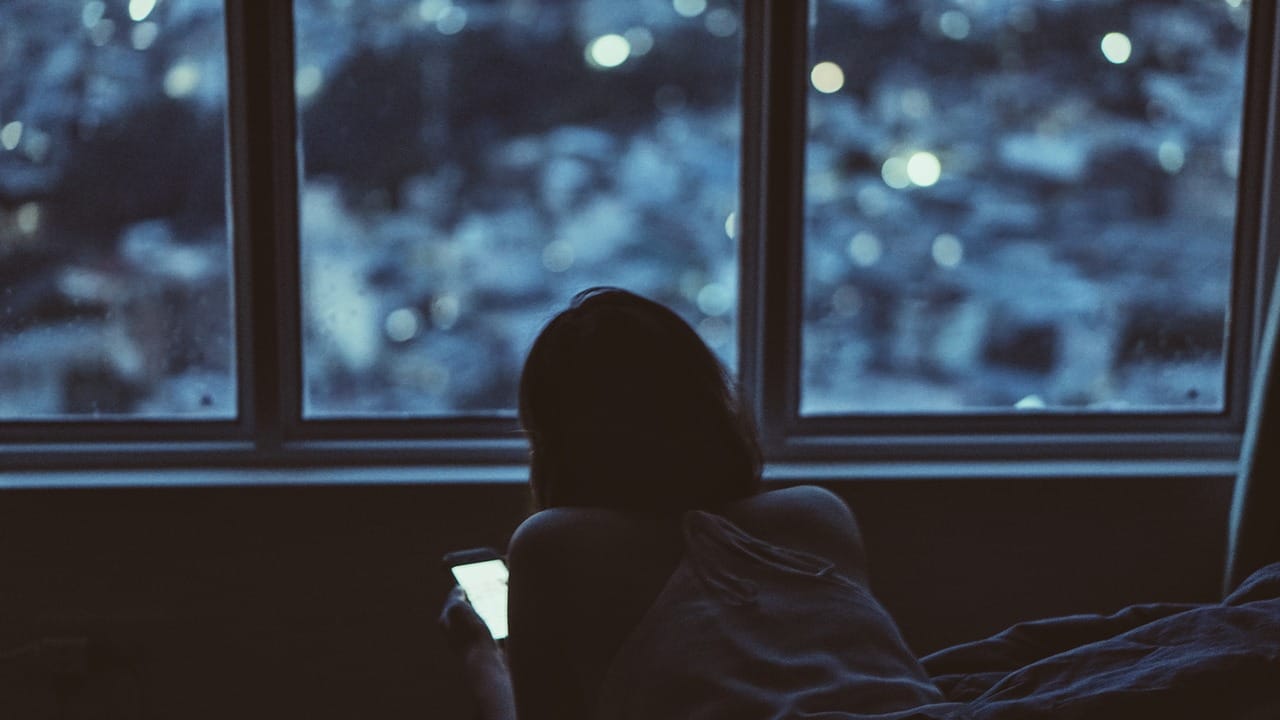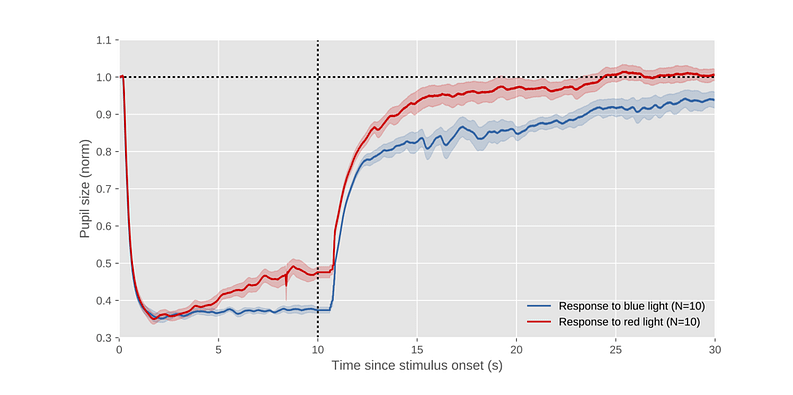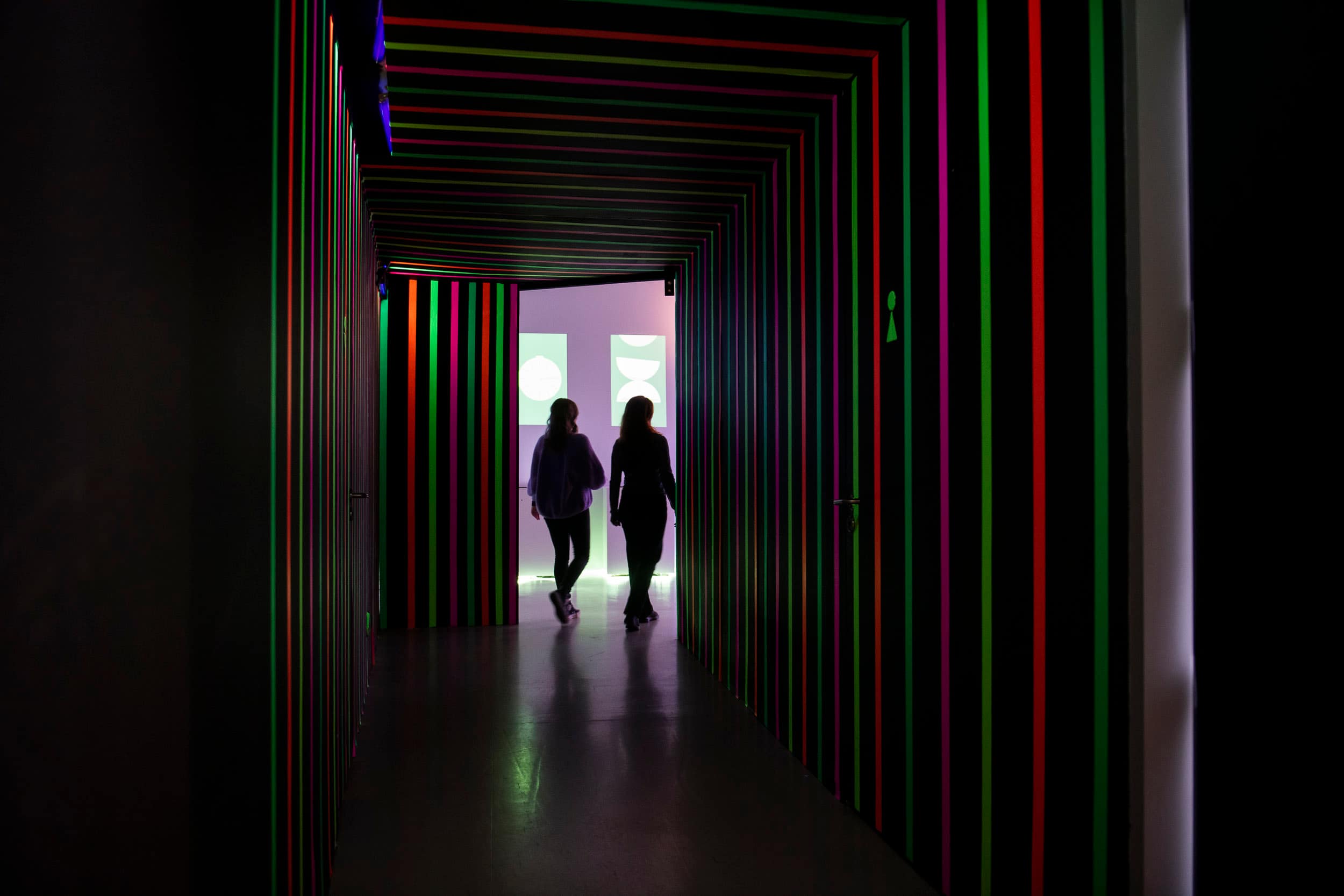
Don’t read this (at night on your phone)
Are you reading this on your smartphone? And is it dark outside? Then, if you care about a good night’s sleep, you really shouldn’t be reading this. But wait, don’t put your phone away just yet! You want to know why you shouldn’t be reading this, don’t you?
There are many reasons why using a phone (or other digital media) at night is an awful idea. There’s the social aspect, of course. The noradrenergic arousal boost that you get when you receive a message will wake you right up, as will waiting for a message that never comes (Aston-Jones & Cohen, 2005). Or the dopaminergic reward boost of watching likes come trickling in on your Instagram—though rarely as fast as you’d like them to, so there’s an element of frustration too.
But I’m a vision scientist, so let’s talk about the role of light. A phone display is bright, and when you’re exposed to brightness at night, you wake up; it disrupts your day-night (circadian) rhythm. That makes intuitive sense, but why is that, actually? To understand why a bright screen wakes you up, let’s take a closer look at how vision works.
Vision is based on photoreceptors, which are light-sensitive cells in the retina. There are three types of photoreceptors: rods, cones, and intrinsically photosensitive retinal ganglion cells (ipRGCs). Rods and cones are well known, but ipRGCs are still rarely mentioned in textbooks, even though they were discovered back in the early 2000s (Berson, Dunn, & Takao, 2002). (Which says something about how overpriced textbooks are). ipRGCs are ganglion cells, that is, relay stations that receive input from other cells, in this case rods and cones, and pass this signal on to the brain. But ipRGCs are also photosensitive themselves: they contain a special photopigment called melanopsin, which allows them to respond slowly to blueish light, even when there is no input from rods and cones.
What do these ipRGCs do? This is still not entirely clear, but they seem to be involved in non-image-forming vision. That is, when ipRGCs become active, this probably doesn’t lead to a conscious experience of seeing something; rather, ipRGCs regulate two things that we are not consciously aware of: the pupil light response and our day-night rhythm.
The influence of ipRGCs on the pupil light response is easy to demonstrate. In the figure below, you see how my pupil responds to 10 s of stimulation by red or blue light (Mathôt, 2018 ). Regardless of whether the light is blue or red, the pupil constricts strongly as soon as the light turns on—that’s the regular pupil light response. But then you gradually see a difference between red and blue emerging.
So, what’s going on here? The first period of the pupil light response, immediately after the light is turned on, is driven primarily by rods and cones, which (unlike ipRGCs) respond very quickly. For the light intensities that I chose here, the rod and cone response is about the same for red and blue light, and the initial pupil constriction for red and blue light is therefore the same as well (in both cases, the pupil constricts to ±35% of its original size in ±1.5 s). But then the rods and cones start to adapt: they become less responsive after a period of constant stimulation. If the pupil light response were driven only by rods and cones, the pupil therefore wouldn’t stay constricted. But why then can we walk around in the sun all day, while our pupils stay constricted the whole time? Well, this is where ipRGCs come in: they take over the task of keeping the pupil constricted after the rods and cones have adapted. And because ipRGCs are mostly sensitive to blue light, the pupil stays constricted more for blue than red light .
There you go: you now understand the difference between red and blue that you see in the graph. That’s cool, right? With an eye tracker and a little deductive logic, you can disentangle the contribution of different photoreceptors in the retina.
As I mentioned, ipRGCs are also involved in maintaining our day-night rhythm. Specifically, if they are stimulated, your brain assumes that it’s daytime—and you wake up. And because ipRGCs are mostly sensitive to blue light, blue light wakes you up more than red light.
Now let’s turn back to phones. If you have an iPhone (or have installed special software on another operating system), you can enable Night Shift. This filters out blue from the display, which will consequently look reddish-yellow. (To me, this initially looks horrible, but you adapt to it quickly.) Now you know why: a reddish display stimulates your ipRGCs less, and therefore also disturbs your day-night rhythm less.
So, there’s a solid scientific basis behind screen options like Night Shift. That being said, whether the benefit is large enough to make any practical difference has, as far as I know, not been tested. And it does nothing to reduce the disruptive social effects of your phone. So—after you’ve circulated this post on social media and subscribed to my YouTube channel— just put your phone down, ok? You deserve a good night’s sleep.
References
Aston-Jones, G., & Cohen, J. D. (2005). An integrative theory of locus coeruleus-norepinephrine function: adaptive gain and optimal performance. Annual Reviews Neuroscience, 28, 403–450. https://doi.org/10.1146/annurev.neuro.28.061604.135709
Berson, D. M., Dunn, F. A., & Takao, M. (2002). Phototransduction by retinal ganglion cells that set the circadian clock. Science, 295(5557), 1070–1073. https://doi.org/10.1126/science.1067262
Gamlin, P. D. R., McDougal, D. H., Pokorny, J., Smith, V. C., Yau, K.-W., & Dacey, D. M. (2007). Human and macaque pupil responses driven by melanopsin-containing retinal ganglion cells. Vision Research, 47(7), 946–954. https://doi.org/10.1016/j.visres.2006.12.015
Mathôt, S. (in press). Pupillometry: Psychology, physiology, and function. Journal of Cognition.






